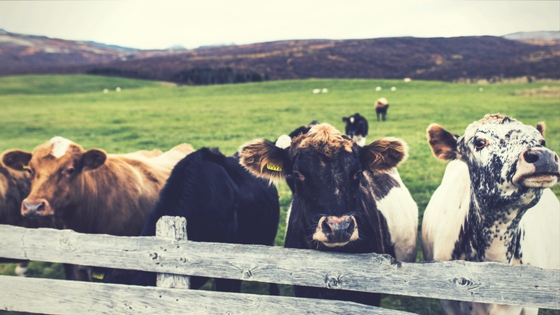I just got back from a trip to see a college friend who lives in eastern Canada. It was a long haul from my home in Northern Arizona, but I had the good fortune to be able to combine it with presenting at the University College summer faculty conference in Augusta, Maine.
We had a long weekend to laugh and reminisce, to talk about our experiences teaching and working in higher education, and also about the quirks of the regions where we ended up making our homes. The topic turned to what he’d learned by touring farms and ranches in the area, including some high-tech practices I’d never heard of before.
Some dairy farms these days employ fully robotic milking machines, set up so that they not only carry out the physical process but let cows run the show, coming in when they want and leaving when they are done. This frees the farmer from the locked-in milking schedule, of course, and in theory should make the cows more comfortable. But the other thing this system does is generate data. Electronic ear tags, scanned when each animal comes through the apparatus, make it possible to precisely track frequency of milking sessions, time of milking, even – according to my friend – which teat produces the most and when. These data, in turn, help individual farmers, and the dairy industry as a whole, fine tune what they do, to get more milk in less time.
This seems to me an admittedly strange but apt parallel to the data we get from our various educational technologies. We can see when students access our materials, and even – up to a point – what they are doing with them. We can track their performance over time, and as a function of different things they do, or we do, in the run up to those assessments. We can differentiate what works for students with different characteristics, for example revealing the kinds of approaches that close achievement gaps.
I’m betting that most academics, even the ones who are okay with the ethics of dairy, are uncomfortable with the analogy between extracting milk and promoting learning. Let’s go there anyway, though, because we need to be thinking creatively if we’re going to accomplish the promise of contemporary higher education, to expand learning to more people and to higher levels than has ever been done before in human history. Much has been made of the challenges to our antiquated systems due to disruption, unbundling and other market dynamics, but we have to realize that some of the challenge is inherent to the ambitious nature of our goals. If it were easy, it would have been done already, many times over.
The analogy also exposes the rather glaring gap between what we could do with information gleaned from ed tech and what we actually do in practice. I’ve written about this before and it’s an issue that still bothers me – that the technology we have has become part of standard practice for many instructors, but using and responding to the data has not.
Adaptive learning systems are supposed to accomplish something like what those milking systems do, micro-adjusting the sequence or selection of materials in response to individual students’ performance over time. This has been an area of interest for decades within educational technology, and is if anything becoming even more of a focus as it becomes technically easier to realize the vision of individualized online instruction that meshes with what we know about how learning happens in the mind and in the brain.
These systems do continue to evolve and there is a lot of potential left to exploit. However, if the idea is that the systems relieve us of responsibility to guide students, select content, and make decisions about what works, that’s simply a fantasy. Granted, it’s an appealing one: faculty put content online and walk away, students punch in their responses, the system adapts automatically and magic happens. But with few exceptions, this is not the way the technologies work. Partly this is because so many disciplines don’t lend themselves to fully automated grading and feedback. But it’s also because we just haven’t put in the work to completely re-envision what meaningful interaction with learning materials could really look like and to build the systems for realizing that new vision.
We need to reshape our practices to not just use technologies but use the data the technologies afford us, which is more a matter of our practices and mindset than anything. Students are not cows, and learning is not a commodity, but if dairy farms can use the information they have to radically improve on what they do – couldn’t we?
